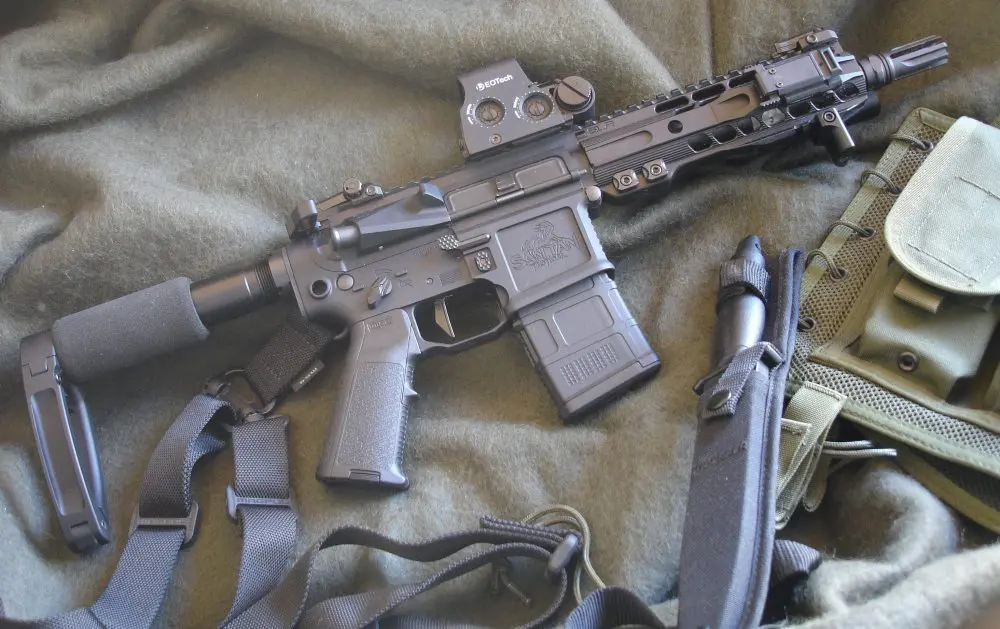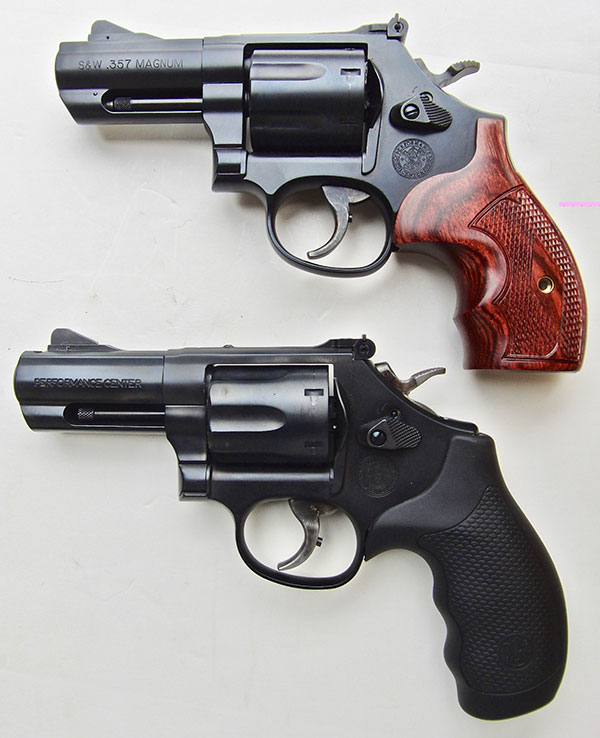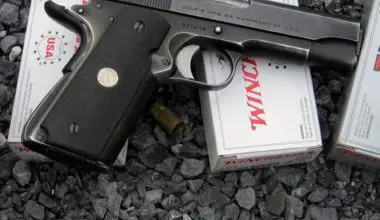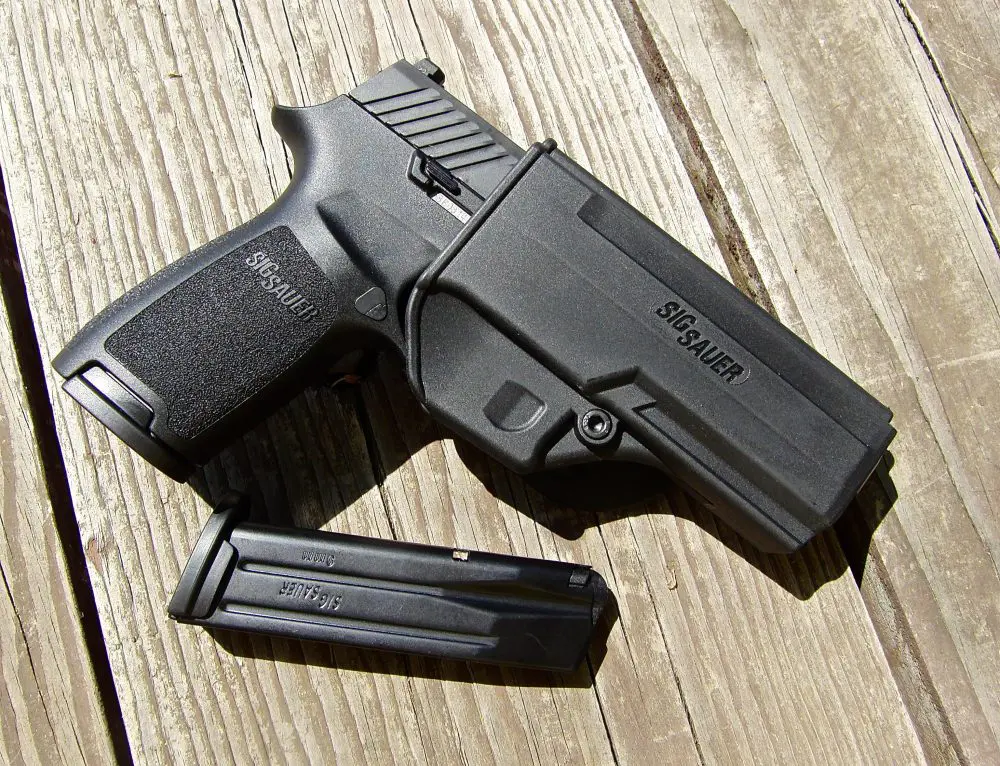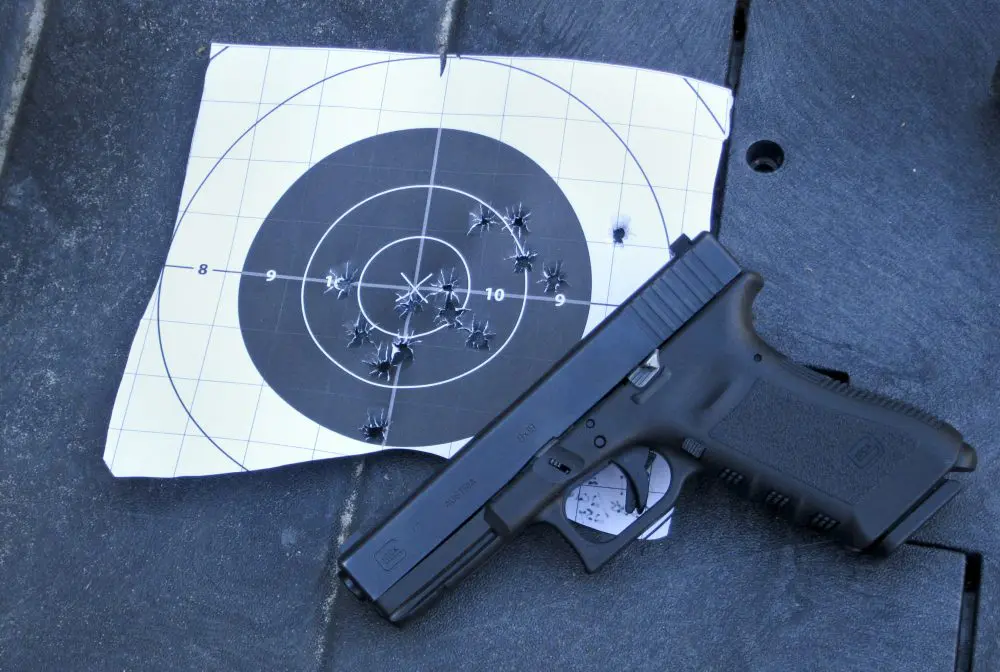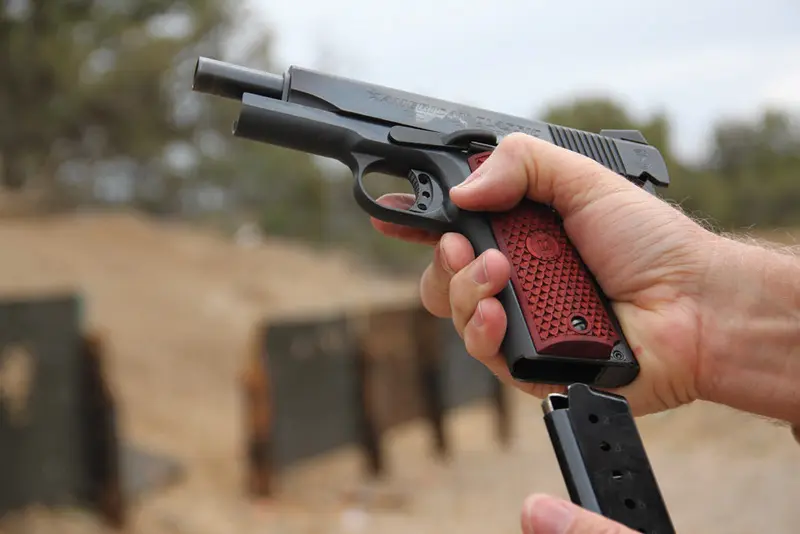
After serving in the Navy, I found myself working in a small west Texas town. I met one of the local doctors who was a Filipino. During a conversation, I mentioned “P.I.” (Philippine Islands). The doctor quietly replied, “R.P.” (Republic of the Philippines). I was properly corrected.
As a sailor, I had a rather limited view of the Philippines and their role in the Vietnam War. But a review of history told me of a long relationship between the United States and the Philippines— independent, wartime allies, American form of government, Asia-Pacific partner, and proud and successful people.
It is therefore not a surprise that Hector Rodriguez should become both an internationally acclaimed shooter as well as the CEO of MetroArms in the Republic of the Philippines. Hector was a competitive IPSC shooter in the 1990s. He was close to the late John Nowlin Sr., from whom he learned a great deal about custom 1911s.
Hector has been in the firearms field since 1994 and founded MetroArms in 2005. MetroArms produces a complete line of 1911 pistols in both standard and increased capacity models. They all bear the touch of a knowledgeable and experienced shooter. The American Classic is the basic line of Metro’s products.
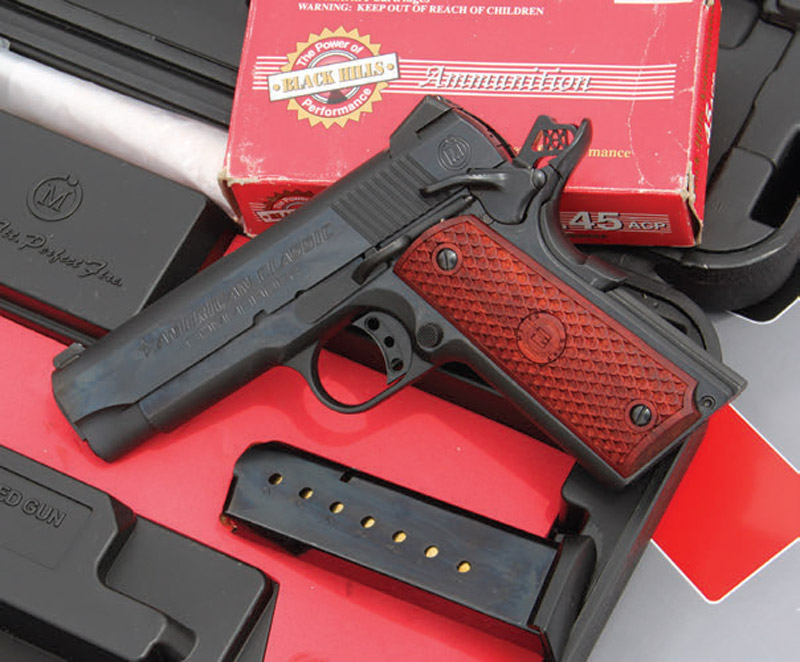
Table of Contents
THE BARE BONES
A familiar pilot adage is that if a plane looks good, it will fly good. I applied this adage to the Metro Commander. It looks like a Commander, therefore it will shoot good. The lineup of 1911s has always been in my mind a case of Goldilocks and the Three Bears. Too big, too little, just right. Since I first owned a Colt Commander some 25 years ago, I have always thought that the slightly shorter barrel coupled with the full length grip was the perfect combination for the 1911.
The Metro comes in a very nice hard plastic carrying case. Before handling the Metro, I cleaned off a preservative solution reminiscent of transmission fluid in which the pistol was shipped. After this brief cleaning, I began to fondle it. It fondled well.
On the whole, the Metro is a fairly faithful version of the Commander. It has a simple, even, dark blue finish. Only after I handled the Metro for a while did I begin to notice little things. The Metro Commander is not a standard basic model, nor is it a full custom job. The Metro’s factory features place it clearly in between, and interestingly so.

STANDARD AND CUSTOM FEATURES
Let’s look at the standard features. It uses a standard Colt pattern recoil system of uncaptured spring, recoil spring plug, and barrel bushing. The frame does not have any checkering on the trigger guard or the front or back strap. The magazine well is not beveled. The slide does not have an extra set of serrations near the muzzle. The front sight is fitted into a dovetail in the slide.
And now the custom features: Both the slide lock and thumb safety are oversized. The magazine release is extended, but with an otherwise standard head. The ejection port is lowered. The trigger is skeletonized and has an overtravel adjustment screw. The face of the trigger has a newly designed checkering that is about as aggressive as any checkering I have ever seen on a 1911. The grip safety has a raised palm pad at the base and a long curved recessed beavertail at the top. The mainspring housing is flat. The rear sight is a lowprofile combat style. The hammer is an elongated Commander oval with “MA” monogram within the loop. The wood grips are Polomojo Rojo, a Spanish red wood, and are laser cut with a remarkably aggressive pattern. So back I go to fondling the Metro.
In handling the Metro, I did not miss any of the custom checkering that might normally appear on the frame. Not surprisingly, it felt just like my old factory Colt. Likewise I did not miss the extra serrations near the muzzle. I was brought up before these were popular and have never trained to use them.
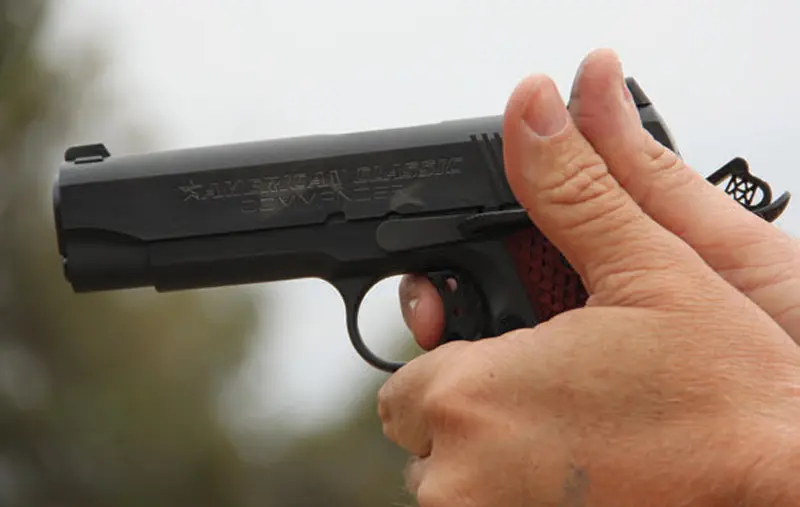
The sights caught my attention. Having started my 1911 history with a variety of government-issue pistols, I was familiar with the very narrow front sight and notch on the bladed rear sight. The Metro sights seemed small. The rear sight is a modern design but too small for my liking. Likewise, the front sight is relatively small, and here is where a concern arose.
Sighting options are a penny a pound on the 1911 pattern. As long as you match the slide cut to the sight of your choice, the world awaits you. If I could make only one change on any 1911 or perhaps any pistol, it would probably be the sights. My preference is Novak or XS Sights. The Metro’s sights also have three white dots. Not the most modern or technical design, but quite satisfactory.
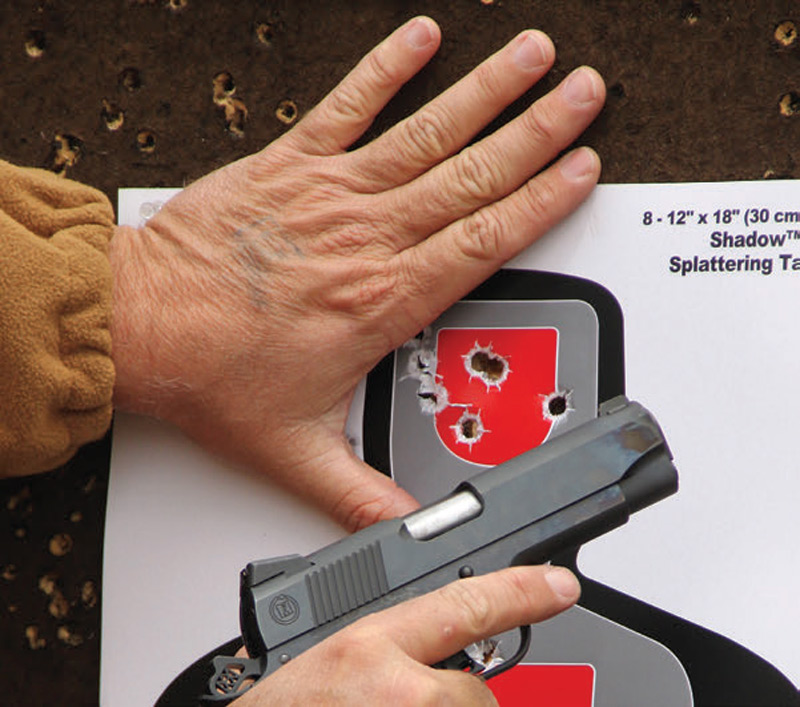
I like the extended slide safety and I did not miss the ambidextrous version. I also know that a quick phone call to Brownell’s and I could have any imaginable safety I could want. Same with the magazine release button. No issues.
Moving forward, the Metro’s slide lock was oversized. I am a “slide lock” man and not a “slide release” person. Therefore, I do not need an oversized slide lock lever.
When I train or teach, I use the slingshot method of releasing the slide. I like a single technique that can be used for multiple tasks. I use the slingshot for the slide release, clearing a malfunction, and administrative unloading. Keep it simple! From experience, I have found that slide release people are often competitors who use the lever as a release in order to shave time at matches. More power to them. In my case, a quick trip to a grinder and some touch-up bluing and it would be perfect.

Regarding the palm pad on the grip safety and the beavertail, I am neither here nor there about them. I am also ambivalent about the magazine release.
On the topic of magazines, I had forgotten how the magazine virtually flies out of a 1911 grip when the release button is pushed. I am currently issued a plastic wonder gun from which the magazine never falls free and must always be extracted by hand. The Metro factory magazine is fitted with an extended base plate and, based on my plastic pistol experience, I am pleased with the extra purchase.
Although I am not handy, I would consider taking a hand file to the magazine well and adding a bevel. Pass the cold bluing, please.
To further my evaluation of the Metro, I took a full-size custom Vang Comp Systems VCS-1911 and swapped around parts: Metro slide with VCS frame and it worked. Metro frame with VCS slide and it worked. In addition, I took a Crimson Trace Master Series Lasergrip and found that it fitted perfectly on the Metro frame. The Metro fit nicely in a Mitch Rosen holster.
RUNNING THE METRO
At this point I would like to say that I fired 1,000 rounds through the Metro, but frankly as this is written, 1,000 rounds is a fantasy. Ammunition is in short supply and you can’t shoot what isn’t available. Therefore, my shooting test was much more abbreviated.
Using Black Hills Ammunition, the results were as expected, with palmsized groups as fast as I could pull the trigger at around 20 yards. In total I fired about 200 rounds, mostly Black Hills, with a mixed bag of ammo on hand. The Metro fired when I wanted it to, with no malfunctions.
I could have fired more, but stopping to take some photos, the evaluation took a turn for the worse.
The Metro Commander broke. It did not break while shooting—it broke lying in its box.
In order to set up a particular image, I pushed the grip safety off with the tip of my index finger, and the end snapped off the shaft that was still in the frame. In 30 years, I have never seen this happen, and I am unlikely to again.
The safety is a MIM component and, though I am not an expert on metals, it would appear that a bubble or impurity created a weak spot and the part simply failed at this complex junction. The Metro carries a lifetime warranty and the part was quickly replaced.
IN CONCLUSION
What can I say about the MetroArms American Classic Commander? Well, it is a Commander size 1911. It is reasonably priced at a suggested retail of $616.00 (Model ACC45B), and it goes bang when you pull the trigger.
However, due to the thumb safety breaking after a minimal number of rounds, I would not stake my life on it if something else were available.
